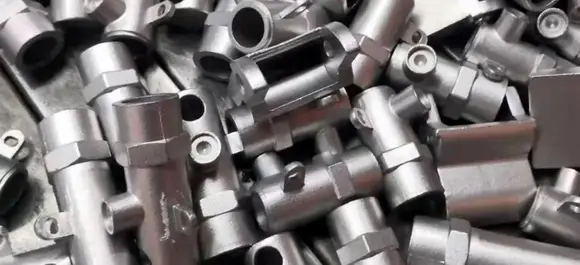Mobile:+86-311-808-126-83
Email:info@ydcastings.com
Understanding the Role and Function of Exhaust Manifolds in Engine Performance
Understanding the Exhaust Manifold in Engine Performance
The exhaust manifold is a crucial component of an internal combustion engine that plays a significant role in the overall performance and efficiency of the vehicle. It is responsible for collecting exhaust gases from the engine's cylinders and directing them to the exhaust system. This key function not only affects the engine's performance but also its emissions and fuel efficiency.
Design and Function
Typically made from cast iron or stainless steel, the design of the exhaust manifold is tailored to withstand high temperatures and resist corrosion. Its structure often resembles a series of pipes that merge into one, with each pipe connecting to the exhaust port of a corresponding engine cylinder. This design allows for efficient collection of gases and smooth flow to the exhaust system.
When an engine operates, the combustion process generates high-pressure exhaust gases. The exhaust manifold is designed to capture these gases as they escape from the cylinders. A well-designed manifold minimizes back pressure, allowing exhaust gases to exit the engine more freely. This is critical because excessive back pressure can hinder engine performance, reduce efficiency, and ultimately lead to a decrease in power output.
Impact on Engine Performance
The efficiency and design of the exhaust manifold can significantly influence an engine’s horsepower and torque. For instance, aftermarket performance manifolds are often installed by car enthusiasts looking to enhance engine performance. These performance manifolds typically feature smoother bends and larger diameters, which facilitate a more efficient exhaust flow. This can result in increased power and an improved throttle response.
exhaust manifold engine

In contrast, a poorly designed or damaged manifold can lead to severe performance issues. Problems such as cracks or leaks in the manifold can result in poor exhaust flow, leading to a drop in engine performance and even increased emissions. Additionally, exhaust leaks can introduce unwanted air into the exhaust system, which can cause the engine to run lean and trigger performance problems.
Environmental Considerations
Modern vehicles are subject to strict emissions regulations, and the exhaust manifold plays a role in how well a vehicle meets these standards. Many exhaust manifolds are equipped with integrated catalytic converters, which help in reducing harmful emissions before they exit the vehicle. The performance of the exhaust manifold directly impacts the efficiency of the catalytic converter, making it essential for both performance and environmental compliance.
Maintenance and Troubleshooting
Regular maintenance of the exhaust system, including the manifold, is essential for optimal performance. Signs of a failing exhaust manifold include unusual noises (such as hissing or tapping), a decrease in power, or a noticeable drop in fuel efficiency. If these issues arise, it is crucial to have the manifold inspected and repaired or replaced as necessary.
In conclusion, the exhaust manifold is a fundamental component of an engine that significantly affects performance, efficiency, and compliance with environmental regulations. By understanding its function and maintaining it properly, drivers can ensure their vehicles operate smoothly and efficiently while minimizing their environmental footprint. Whether for everyday use or performance enhancements, the exhaust manifold remains a vital part of automotive engineering.
-
Automobile Water Pumps in Vehicle PerformanceNewsMay.21,2025
-
Valve Box Cover Cast Iron: The Backbone of Fluid Control SystemsNewsMay.21,2025
-
Pump Impeller in Fluid DynamicsNewsMay.21,2025
-
Baffled Oil Pans in Racing Cars: How They Improve PerformanceNewsMay.21,2025
-
Compressor Housing Turbo in Pump EngineeringNewsMay.21,2025
-
Why Oil Pan Thickness Matters for Engine SafetyNewsMay.21,2025











